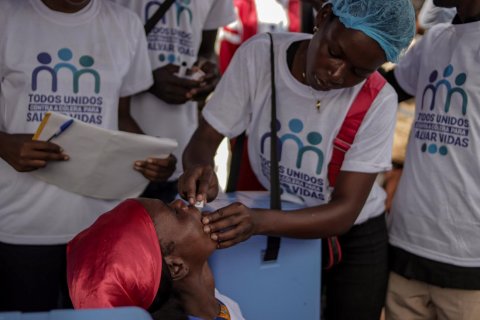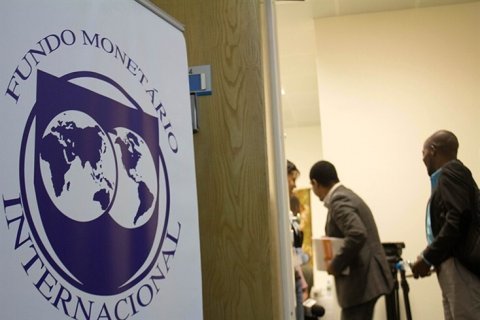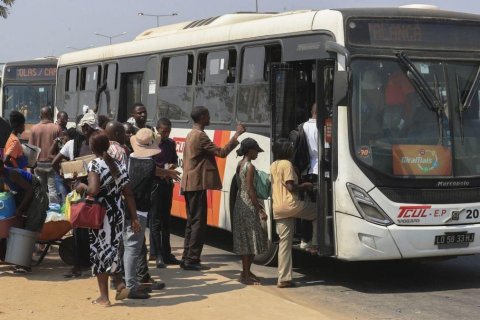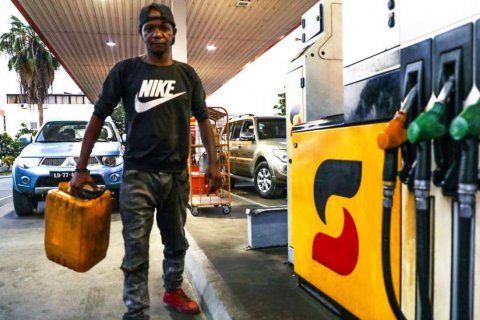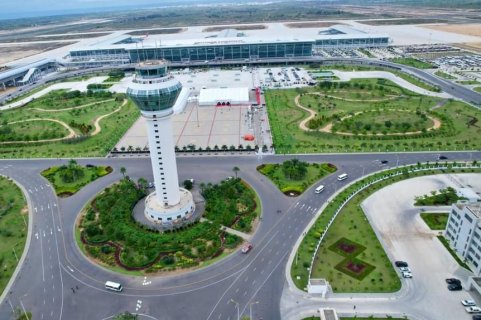For weeks, water has not flowed from taps in several areas of the provinces of Luanda, Bengo and Icolo e Bengo, which are facing a cholera outbreak with more than 400 cases since January 7.
The alternative is underground tanks supplied by tanker trucks, with demand causing prices to soar and making the business increasingly profitable.
The potholed and almost impassable roads in the peripheral neighborhoods of these provinces further aggravate the costs of water, supplied by trucks that fill up on the banks of the Bengo River, in Kifangondo, the axis that connects the three provinces.
Given the shortage, citizens who sell water flock daily to the so-called "girafas" (water sales points), which supply trucks from underground tanks, and some are forced to wait days to fill their domestic reservoirs, lamenting the new prices practiced.
A 20,000-liter tank, previously sold for 20,000 kwanzas, today, with water scarcity and high demand, can cost between 40,000 kwanzas and 60,000 kwanzas, depending on the area, truck drivers and water retailers reported.
"I came to look for water because it has been very difficult to get since the beginning of January. I've been here since yesterday. They say that water is difficult to get, that there is none, and it is very expensive," said Luzia Mateus, a water reseller in the central area of Kapari, Bengo.
Speaking to Lusa at the entrance to one of the Kifangondo "girafas", where he ran to find a truck to fill his 20,000-liter tank, she lamented the lack of water in the area where he lives.
"In Kapari there is no water in the taps, only in the cisterns. Now, with cholera, only God can protect us," she said.
In the same situation was Euginha Modesto, who lives in the Burgalheira neighborhood, Panguila, who said she was looking for water for her home tank and was concerned about the prices.
"In our area we used to pay 22,000 and 25,000 kwanzas for the [water] cistern and now it's 40,000 kwanzas, it's all worrying, because the water helps me and it's very difficult for me," said the water reseller, lamenting the difficulties in maintaining the daughters at school.
At least 100 tanker trucks visit that private "girafa" every day in search of water to supply Luanda, Bengo and Icolo e Bengo, as one of its managers and a laboratory technician at the company, which belongs to Asian citizens, told Lusa.
Eduardo Nicolau Diassonama said that demand for his services had increased by 50 percent, pointing to some "pipe ruptures affecting the Luanda Public Water Company (EPAL)" as reasons contributing to the water shortage in the region.
According to Diassonama, tanker trucks buy 20,000 liters of water for 7000 kwanzas, ensuring that their water "has quality", as a result of physical and laboratory evaluations carried out every two weeks.
Carlos Lombas and Aldair Leão, who fill their tanker trucks at that "girafa", installed on the banks of the Bengo, confirmed the high demand for water, highlighting that the difficulties of access roads, mainly in the interior of the neighborhoods, make the price even higher.
"This water is good, it is of quality, demand has indeed increased", confirmed Carlos Lombas, who has worked in the sector for seven years.
With the water shortage, the demand for tanker trucks has increased, said Aldair, pointing to Panguila as one of the most requested areas, where he makes an average of 10 trips per day, to sell 13,000 liters of water, at a price that varies between 15,000 kwanzas and 20,000 kwanzas.
"There are 13 thousand liters that cost 3500 kwanzas. In regions closer to Panguila, I sell them for 15 thousand kwanzas and in others, far away, they are 20 thousand kwanzas. Thank God this water has quality", he stressed.
Aldair, also a resident of the Kapari area, defended the need to improve the supply and quality of water consumed in order to stop cholera, a disease that, in his opinion, "should already be eradicated in Angola".
"[The Angolan State] has to look at this, because cholera kills (...). For example, we in Kapari do not drink water that comes out of the tap, because we have companies that purify water and we buy others in [small] canteens [grocery stores]", he pointed out.
On the other bank of the same river, in Kifangondo, there is another water "girafa" called AMILG, one of the oldest operating in the district.
Its manager, Pedro Pilares da Silva, said that the opening of the floodgates of some dams contaminated the waters of many rivers.
"The river is quite full, they opened the floodgates and it affected some rivers that are murky, also affecting the canalization (...). From what I heard, water purification products – at EPAL level – are also scarce and the 'stock' is already a little low", he said, confirming the high demand for tanker trucks.
Dozens of the well-known water "girafas", managed by EPAL and private agents, are installed in various parts of the capital and neighboring provinces, where the quality of the water, pumped from rivers or irrigation canals, is often questioned.
The cholera outbreak, with its epicentre in the Paraíso neighbourhood, in the municipality of Cacuaco, in Luanda, has already claimed several lives and the authorities have confirmed the registration of more than 400 cases.


